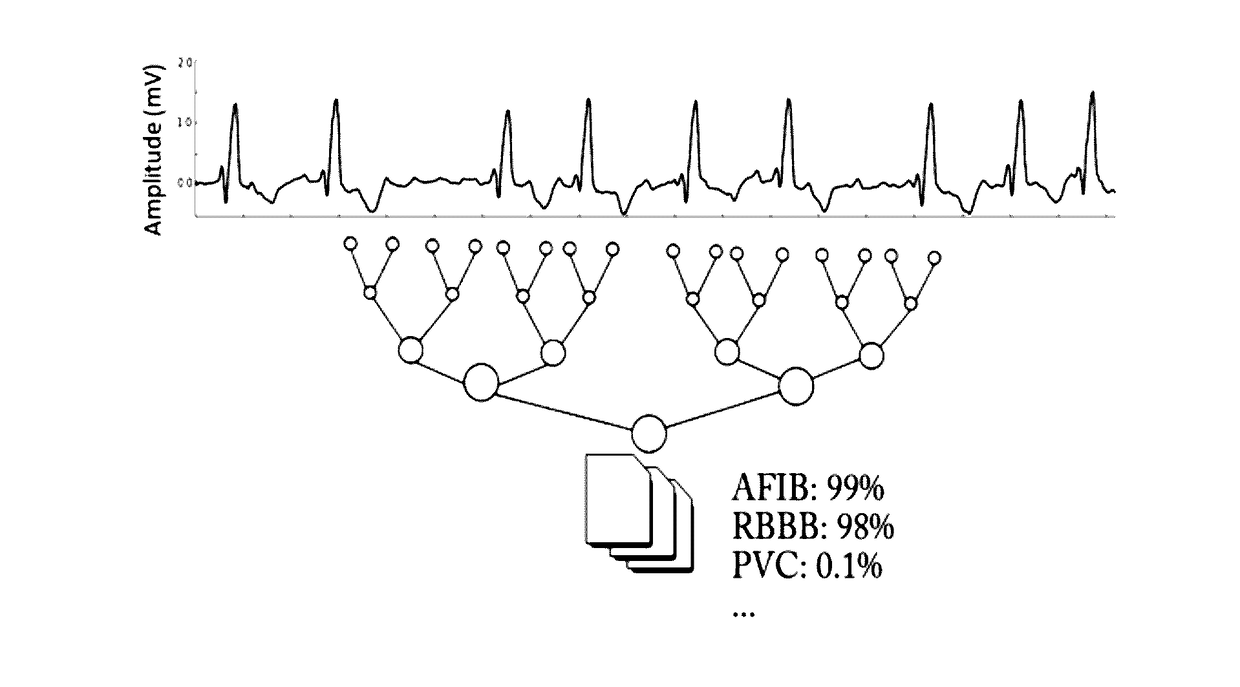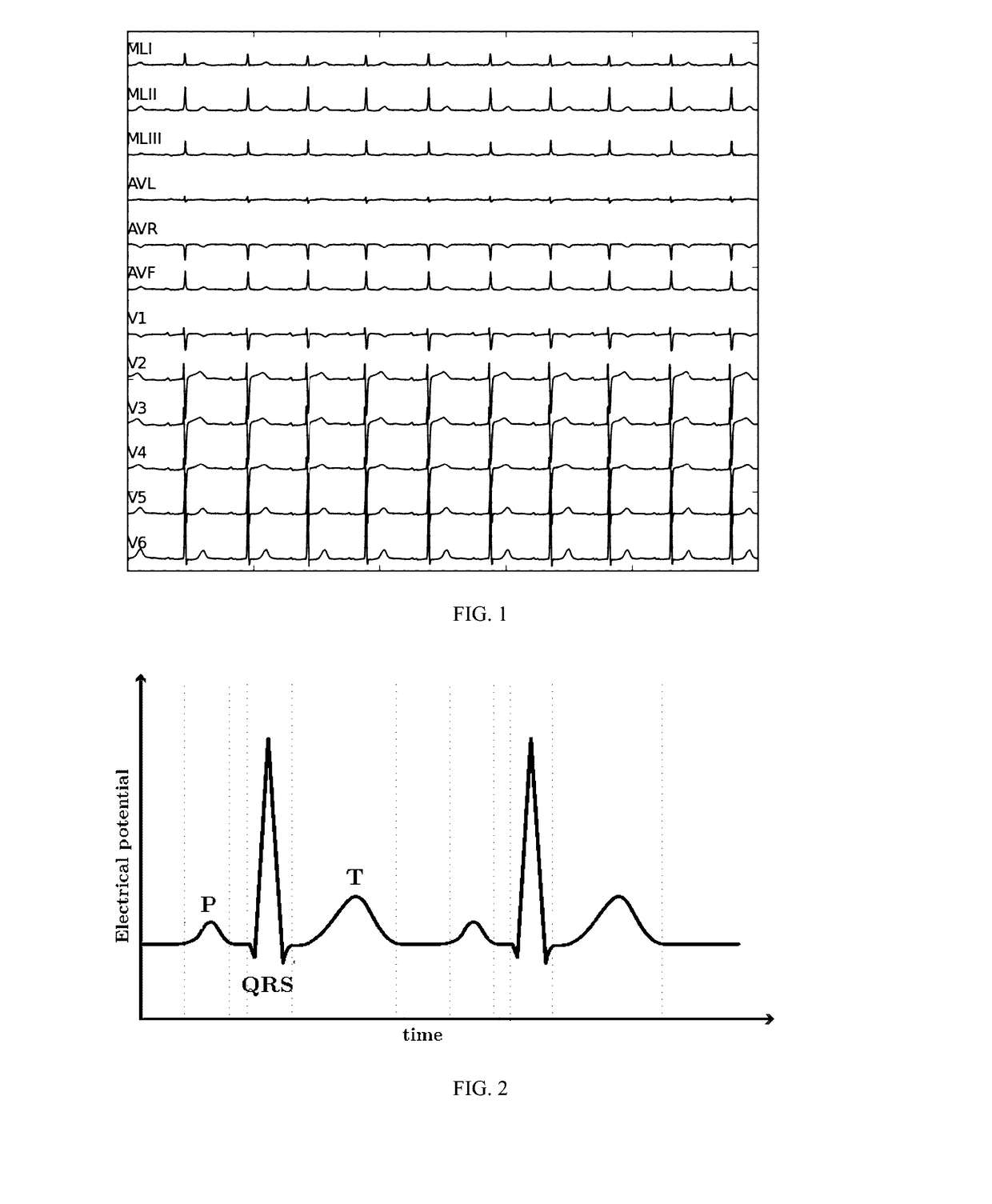Automatic method to delineate or categorize an electrocardiogram
a technology of electrocardiogram and automatic method, which is applied in the field of temporal signal analysis, can solve the problems of slow and expensive interpretation of ecgs, small portion of anomalies that can be easily spotted, and one third of ecgs performed
- Summary
- Abstract
- Description
- Claims
- Application Information
AI Technical Summary
Benefits of technology
Problems solved by technology
Method used
Image
Examples
example 1
for Delineation
[0104]This training was performed on 630 ECGs and the network evaluated on about 900 beats from 70 different patients which were not used for the training phase. The false positive rate was 0.3% for QRS complexes and T waves detection and their false negative rate was 0.2%. They were respectively 5.4% and 4.2% for P waves. The precision of the wave onsets (beginnings) and offsets (ends) are detailed below:
PointStandard Deviation (ms)Bias (ms)P wave start11.2−1.6P wave end11.2−4.0QRS complex start6.3−2.1QRS complex end3.9−1.1T wave end16.1−4.6
[0105]Compared with state-of-the art algorithms, the precision was improved. In FIG. 5 for instance, the ECG exhibits an atrioventricular block which means that the P waves and the QRS complexes are completely decoupled. In this example, the P waves are regular and QRS complexes happen at random times. One can observe in this example that the algorithm correctly found two P waves between the first QRS complex and the second QRS co...
example 2
for Multi-Label Classification
[0106]A network has been trained using about 85,000 ECGs and has been evaluated on a Dataset including 20,000 patients which were not used in the training phase. For the evaluation purpose, the multi-label classification obtained was simplified to normal (no anomaly) / abnormal if need be. The results in terms of accuracy, specificity and sensitivity were the following:
AccuracySpecificitySensitivity0.910.880.92
[0107]A graphical representation of how a standard multi-label is used on ECGs is displayed in FIG. 6. The ECG is given as input to the network, which aggregates the information locally and then combines it layer by layer to produce a high-level multi-label classification of the ECG, in this example correctly recognizing atrial fibrillations and a right bundle branch block. Such networks however take a fixed size as input and the process must be reproduced at different locations so as to analyze the whole signal. FIG. 7 is an example of a graphic re...
example 3
[0108]In another embodiment, the applicant combines features described above in examples 1 and 2. Such combination enables to combine the advantages of both networks in a unique network, providing similar results for both the delineations and the multi-label classifications.
PUM
 Login to View More
Login to View More Abstract
Description
Claims
Application Information
 Login to View More
Login to View More - R&D
- Intellectual Property
- Life Sciences
- Materials
- Tech Scout
- Unparalleled Data Quality
- Higher Quality Content
- 60% Fewer Hallucinations
Browse by: Latest US Patents, China's latest patents, Technical Efficacy Thesaurus, Application Domain, Technology Topic, Popular Technical Reports.
© 2025 PatSnap. All rights reserved.Legal|Privacy policy|Modern Slavery Act Transparency Statement|Sitemap|About US| Contact US: help@patsnap.com



